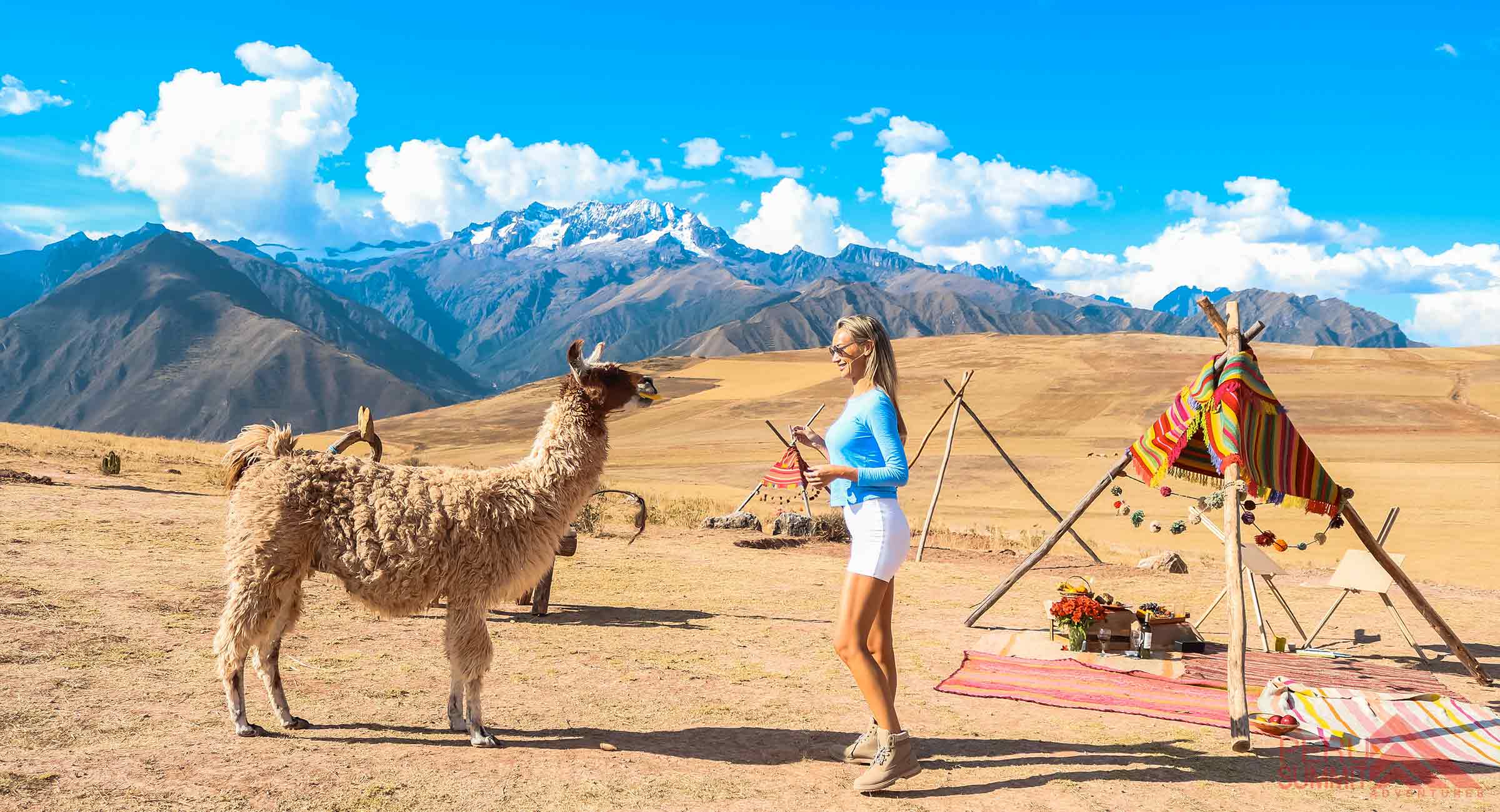
Sacred Valley



The Sacred Valley of Urubamba is a region located in the Andean highlands of Peru. It is a popular destination for tourists visiting the Cusco region because of its natural beauty, fascinating history, and important archaeological sites. Here are some key facts and information about the Sacred Valley of Urubamba:
Overall, the Sacred Valley of Urubamba is a must-see destination for anyone interested in the history and culture of Peru. Its stunning natural beauty and rich cultural heritage make it a truly unforgettable experience for travelers.
The Sacred Valley of Urubamba is a fascinating destination with many highlights for visitors to experience. Here are some of the top highlights of a Sacred Valley tour:
Pisac Ruins: The Pisac ruins are a complex of terraces, aqueducts, and temples that were used for agricultural, religious, and military purposes. They offer stunning views of the valley below and are a testament to the engineering skills of the Inca civilization.
Ollantaytambo Ruins: The Ollantaytambo ruins are known for their impressive stonework and for being the site of one of the few battles where the Incas successfully fought against the Spanish conquistadors. Visitors can explore the ruins and learn about the Inca civilization and their resistance to colonialism.
Chinchero Village: Chinchero is a traditional Andean village located in the Sacred Valley that offers visitors the opportunity to experience local culture and see traditional crafts being made, such as textiles and ceramics. The village is also home to an Inca palace and a colonial-era church built on top of an Inca temple.
Maras Salt Ponds: The Maras salt ponds are a unique and impressive sight. They are a series of thousands of small terraced ponds used for salt harvesting that have been in use since pre-Columbian times.
Moray Terraces: The Moray terraces are a series of circular terraces that were used for agricultural experimentation by the Inca civilization. The terraces are a fascinating example of Inca engineering and offer visitors stunning views of the valley.
Scenic Beauty: The Sacred Valley is known for its stunning natural beauty, with towering mountains, rushing rivers, and verdant valleys. Visitors to the region can take in the stunning scenery while exploring the various archaeological sites and traditional villages.
A tour of the Sacred Valley of Urubamba is a fantastic way to experience the rich history, culture, and natural beauty of Peru. Whether you are interested in Inca history, traditional crafts, or simply taking in the stunning scenery, there is something for everyone in this remarkable region.
There are some regulations that visitors to the Sacred Valley of Urubamba should be aware of. Here are a few key regulations and guidelines to keep in mind:
Entry Fees: Most of the archaeological sites in the Sacred Valley, including Pisac and Ollantaytambo, charge an entry fee. These fees help to support the preservation and maintenance of the sites. Be sure to check the current entry fees before you visit.
Visitor Limits: Some of the archaeological sites in the Sacred Valley have visitor limits to help preserve the fragile structures and prevent overcrowding. Be sure to check if there are any limits and make reservations in advance if necessary.
Respectful Behavior: Visitors should always behave respectfully when visiting archaeological sites and traditional villages in the Sacred Valley. This includes not touching or climbing on the structures, following any posted rules and regulations, and respecting local customs and traditions.
Environmental Protection: The Sacred Valley is a delicate ecosystem, and visitors should take care not to damage the environment. This includes not littering, staying on designated paths and trails, and not disturbing any plants or wildlife.
Tour Operators and Guides: It is highly recommended to hire a licensed tour operator that will assign you a licensed guide. Not only can a guide provide valuable information and insights, but they can also help ensure that visitors are following all regulations and behaving respectfully.
By following these regulations and guidelines, visitors can help to preserve the natural and cultural beauty of the Sacred Valley for future generations.
This tour is available all year round, but we recommend visiting in the dry season which starts from Mid-April until October, it’s when the weather is pretty good for exploring. December to March is the rainy season so big showers are very often. We organize tours daily to Sacred Valley, if planning to visit, please contact us or call at +51 984 464 391.
The weather in the Sacred Valley of Urubamba can vary depending on the time of year and the altitude of the specific location. However, generally speaking, the Sacred Valley has a mild and pleasant climate year-round. Here are some general temperature and climate details for the region:
Temperature: The temperature in the Sacred Valley typically ranges from around 10°C to 25°C (50°F to 77°F) depending on the season and altitude. It can get colder at night, particularly during the winter months (June to August).
Rainy Season: The rainy season in the Sacred Valley typically runs from November to March, with the heaviest rainfall occurring in January and February. During this time, there can be occasional heavy rain showers, but most days will still have periods of sunshine.
Dry Season: The dry season in the Sacred Valley runs from April to October, with the driest months being June to August. During this time, the weather is typically sunny and dry, with cool nights and warm days.
Altitude: The Sacred Valley is at a relatively high altitude, with most locations being between 2,500 and 3,500 meters (8,200 to 11,500 feet) above sea level. At these altitudes, the air is thinner, and the temperature can be cooler than at sea level.
Overall, the weather in the Sacred Valley is generally mild and pleasant, with plenty of sunshine and moderate temperatures. However, visitors should be prepared for occasional rain showers, especially during the rainy season. It is also important to dress in layers and be prepared for cooler temperatures at higher altitudes.
Getting prepared for your Sacred Valley tour can help ensure that you have a safe, enjoyable, and memorable experience. Here are some tips on how to prepare:
Research and Planning: Start by doing some research on the Sacred Valley and the various attractions and activities that you are interested in. Plan out your itinerary in advance and make any necessary reservations.
Health and Fitness: The Sacred Valley is at a high altitude, so it is important to be in good health and have a moderate level of fitness. Make sure to get plenty of rest and exercise before your trip, and consult your doctor if you have any health concerns.
Packing List: Make a packing list and be sure to bring appropriate clothing and gear for the weather and activities. Don’t forget essentials like sunscreen, insect repellent, and a hat, as well as any necessary medication.
Currency and Payment: Make sure to bring enough cash in the local currency (Peruvian Sol) for your trip. Some places may not accept credit cards, so it is always a good idea to have some cash on hand.
Language and Culture: Learn a few basic phrases in Spanish and familiarize yourself with local customs and traditions. Being respectful and polite can go a long way in enhancing your experience and making connections with locals.
Tour Operator and Guide: Consider hiring a licensed tour operator that will assign you a professional guide to help you navigate the area and provide valuable insights and information about the history, culture, and natural beauty of the region.
By taking these steps to prepare for your Sacred Valley tour, you can help ensure that you have a safe, enjoyable, and fulfilling experience in this remarkable destination.
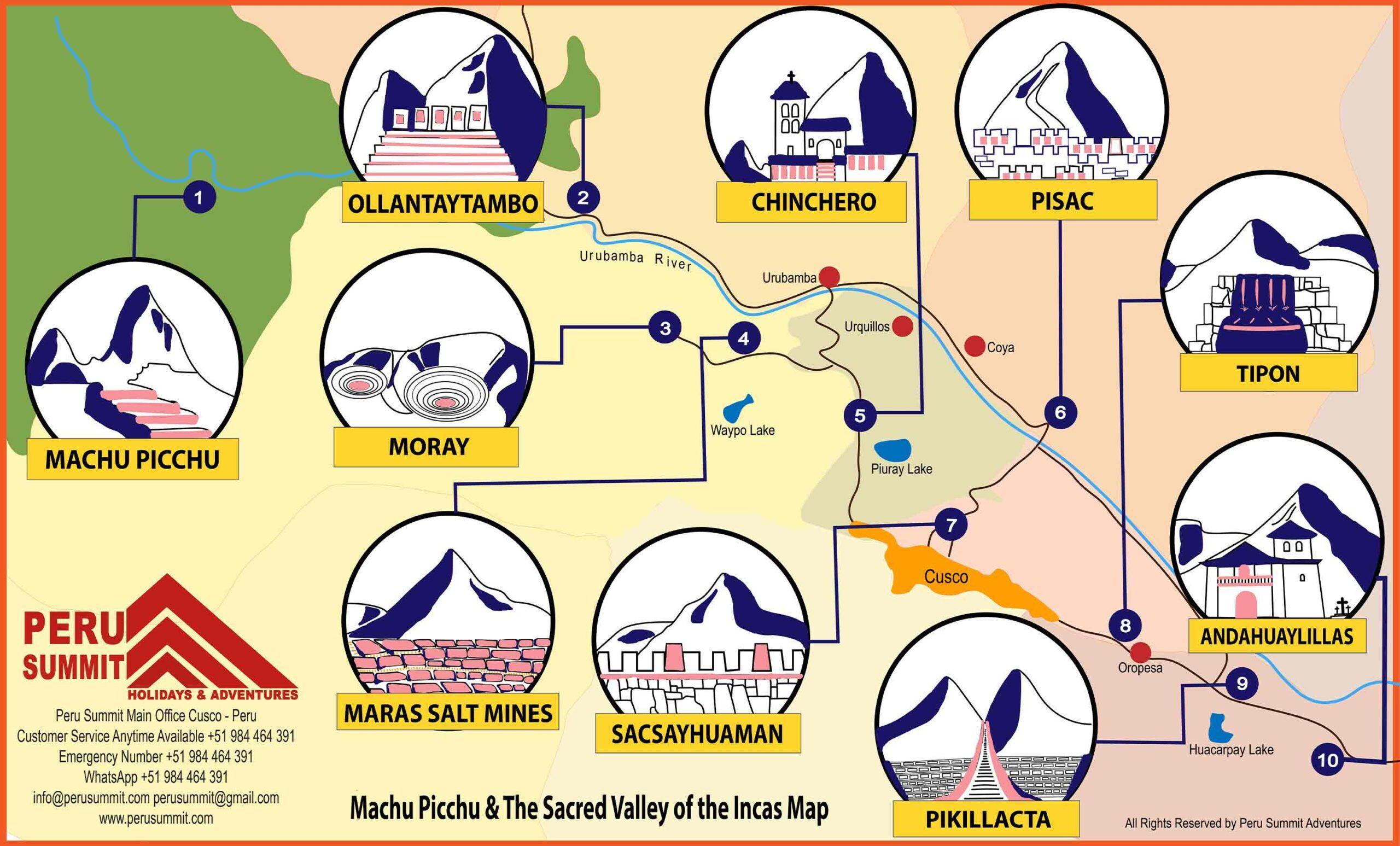
Here are some travel tips for your Sacred Valley tour:
Altitude Sickness: The Sacred Valley is located at a high altitude, and some visitors may experience symptoms of altitude sickness. To avoid this, drink plenty of water, avoid alcohol and smoking, and take it easy on the first few days of your trip.
Acclimatization: If you are traveling from a low altitude to the Sacred Valley, it is a good idea to spend a few days acclimatizing in Cusco or another nearby city before heading to the Sacred Valley.
Safety: As with any travel destination, it is important to take precautions to ensure your safety. Keep an eye on your belongings, be aware of your surroundings, and avoid walking alone at night.
Photography: The Sacred Valley is a stunningly beautiful destination, and you will want to capture some memories with your camera. However, be respectful when taking photos of people and always ask for permission first.
Food and Water: The tap water in the Sacred Valley is not safe to drink, so be sure to drink only bottled or filtered water. Also, be cautious when eating street food and make sure that any fruits and vegetables have been washed in safe water.
Sun Protection: The sun can be strong in the Sacred Valley, so be sure to wear sunscreen, a hat, and sunglasses to protect yourself from UV rays.
Clothing: Dress in layers as the temperature can vary greatly throughout the day, especially at higher altitudes. Bring comfortable walking shoes and a waterproof jacket in case of rain.
Cash: Be sure to bring enough cash in the local currency, Peruvian Sol, as some places may not accept credit cards.
Respect Local Customs: The Sacred Valley is home to many indigenous communities, so be respectful of local customs and traditions. This includes dressing modestly and asking for permission before taking photos.
By keeping these tips in mind, you can have a safe and enjoyable trip to the Sacred Valley.
The food in the Sacred Valley is a delicious mix of traditional Peruvian and Andean cuisine, with influences from Spanish, Incan, and other indigenous cultures. Here are some popular dishes you might want to try during your visit:
Ceviche: This is a popular seafood dish made with raw fish marinated in lime juice and mixed with onions, chili peppers, and other spices.
Lomo Saltado: A classic Peruvian stir-fry dish that combines beef, onions, tomatoes, and french fries served with rice.
Rocoto Relleno: A spicy dish made with stuffed peppers filled with ground beef, onions, and cheese.
Cuy: Also known as guinea pig, this is a traditional Andean delicacy that is usually roasted or fried and served with potatoes and vegetables.
Aji de Gallina: This creamy chicken dish is made with a sauce made from yellow chili peppers, milk, bread, and spices.
Quinoa Soup: Quinoa is a staple grain in the Andes, and this soup combines the superfood with vegetables and spices for a hearty and healthy meal.
Pisco Sour: This is a classic Peruvian cocktail made with pisco, lime juice, sugar, and egg white.
In addition to these dishes, you will also find a wide variety of fresh fruits and vegetables, Andean grains, and locally sourced meats and seafood. Don’t miss the opportunity to try some of the unique and flavorful cuisine of the Sacred Valley during your visit!
There are plenty of other sights and activities to enjoy in the Sacred Valley during your visit. Here are a few more ideas:
Pisac Market: This is one of the most popular markets in the region, where you can find traditional handicrafts, textiles, and other souvenirs. The market is open every day, but it’s best to visit on Sundays when it’s at its busiest.
Moray: This is a fascinating archaeological site that features circular terraces that were used by the Incas for agricultural experiments.
Ollantaytambo: This is a well-preserved Incan town with impressive ruins, including a temple, fortress, and water channels.
Maras Salt Mines: These ancient salt mines have been in use since pre-Incan times and are still in operation today. You can visit the mines and see the unique process of how the salt is harvested.
Chinchero: This charming village is known for its traditional textiles and weaving techniques. You can visit local weaving cooperatives to see the process and purchase high-quality textiles.
Hiking and Outdoor Activities: The Sacred Valley is surrounded by stunning natural beauty, and there are plenty of opportunities for hiking, biking, and other outdoor activities. You can explore the surrounding mountains and valleys on foot or on a guided tour.
These are just a few of the many things you can see and do during your visit to the Sacred Valley. Whether you’re interested in history, culture, outdoor activities, or just relaxing, there’s something for everyone in this beautiful region of Peru.
See below our list of our Sacred Valley Tours and multi-day packages that include this unique place, click on each option to see further information.
Packages that include this destination:
Here are some frequently asked questions about traveling to the Sacred Valley:
What is the best time of year to visit the Sacred Valley?
The best time to visit the Sacred Valley is during the dry season, which runs from April to September. During this time, you can expect warm, sunny weather with low chances of rain. The rainy season runs from November to March and can make hiking and outdoor activities more difficult.
What should I pack for the Sacred Valley?
Pack comfortable, lightweight clothing for warm days and cooler nights. It’s also important to pack sturdy walking shoes, sunscreen, a hat, and insect repellent. If you plan to visit any religious sites, it’s recommended to bring clothing that covers your shoulders and knees.
Do I need to speak Spanish to travel to the Sacred Valley?
While knowing some basic Spanish can be helpful, it’s not necessary. Many locals in the Sacred Valley speak Quechua, an indigenous language, in addition to Spanish. It’s always a good idea to learn some basic phrases, such as greetings and asking for directions.
Is it safe to travel to the Sacred Valley?
Yes, the Sacred Valley is generally considered safe for tourists. However, it’s important to take precautions to protect yourself and your belongings. Avoid carrying large amounts of cash and keep valuables in a secure place. Be aware of your surroundings and stay in well-lit areas at night.
What are some must-see attractions in the Sacred Valley?
Some popular attractions in the Sacred Valley include Machu Picchu, Ollantaytambo, Pisac, and Moray. There are also many hiking and outdoor activities available, such as hiking the Inca Trail or taking a bike tour.
Do I need a tour guide to visit the Sacred Valley?
While it’s possible to explore the Sacred Valley on your own, many visitors choose to hire a tour guide. A guide can provide valuable insights into the history and culture of the area, as well as help with navigation and transportation.


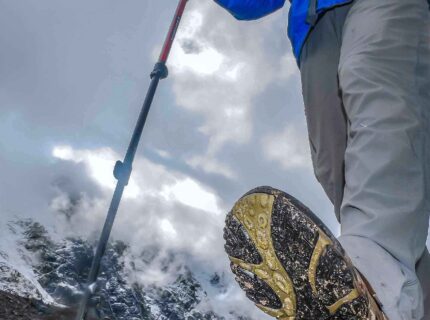


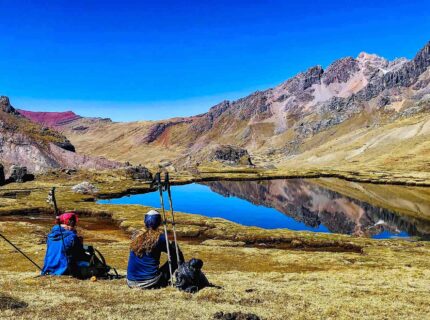


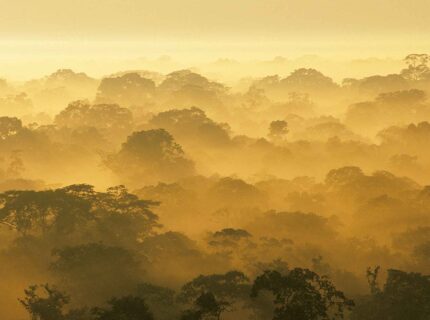



We can customize this private tour just for you. Any detail can be tailored – activities, length, hotels, and other destinations as well as we can accommodate this tour to the photography experience. Use the form below to start planning your experience of a lifetime.
The experts at Peru Summit Adventures specialize in crafting highly-customized trips. We look forward to answering your questions about your upcoming travel plans. Get started by filling out the information below.